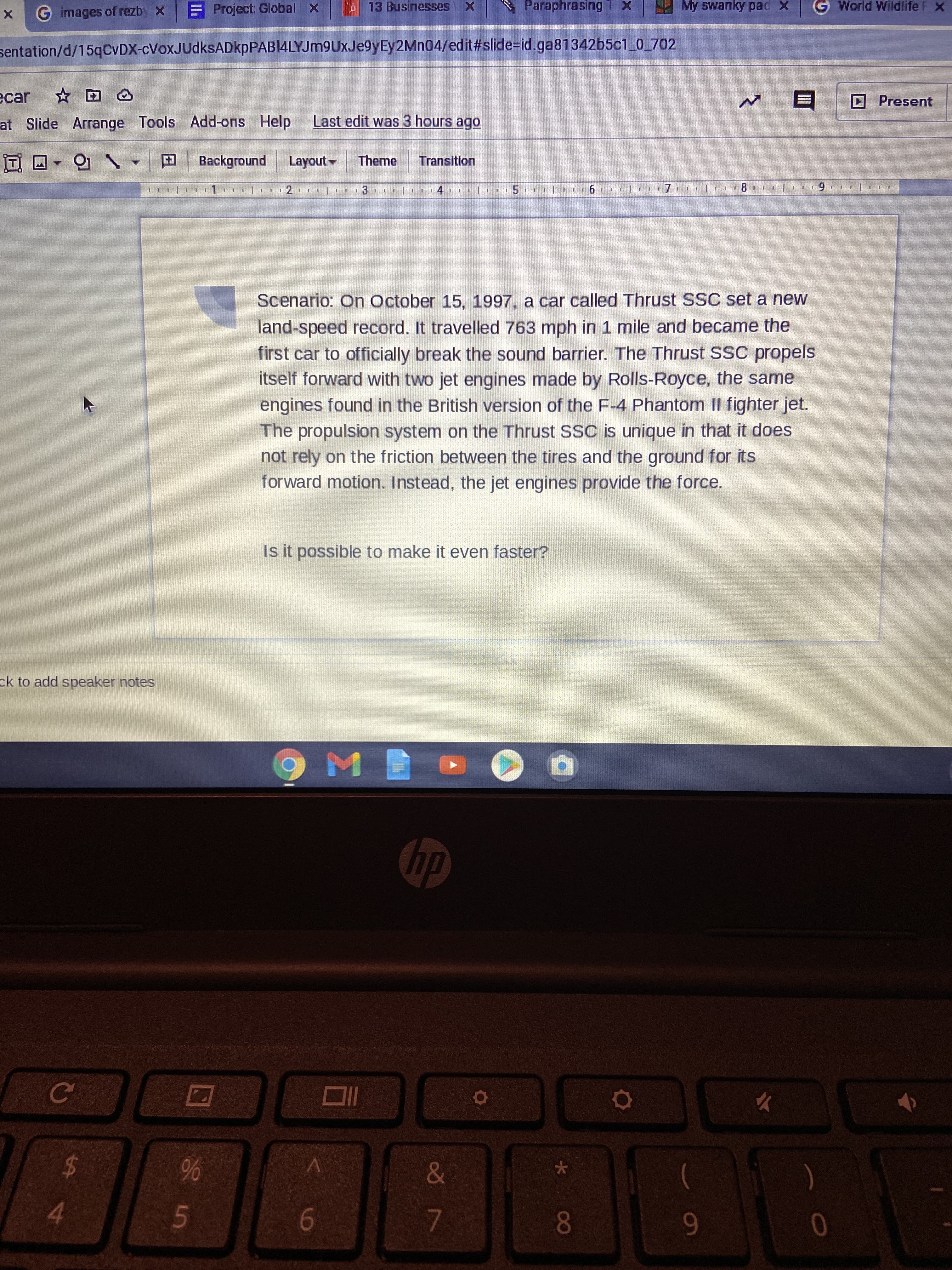Scenario: On October 15, 1997, a car called Thrust SSC set a new land-speed record. It travelled 763 mph in 1 mile and became the first car to officially break the sound barrier. The Thrust SSC propels itself forward with two jet engines made by Rolls-Royce, the same engines found in the British version of the F-4 Phantom Il fighter jet. The propulsion system on the Thrust SSOC is unique in that it does not rely on the friction between the tires and the ground for its forward motion. Instead, the jet engines provide the force. Is it possible to make it even faster?
Properties of sound
A sound wave is a mechanical wave (or mechanical vibration) that transit through media such as gas (air), liquid (water), and solid (wood).
Quality Of Sound
A sound or a sound wave is defined as the energy produced due to the vibrations of particles in a medium. When any medium produces a disturbance or vibrations, it causes a movement in the air particles which produces sound waves. Molecules in the air vibrate about a certain average position and create compressions and rarefactions. This is called pitch which is defined as the frequency of sound. The frequency is defined as the number of oscillations in pressure per second.
Categories of Sound Wave
People perceive sound in different ways, like a medico student takes sound as vibration produced by objects reaching the human eardrum. A physicist perceives sound as vibration produced by an object, which produces disturbances in nearby air molecules that travel further. Both of them describe it as vibration generated by an object, the difference is one talks about how it is received and other deals with how it travels and propagates across various mediums.

Trending now
This is a popular solution!
Step by step
Solved in 2 steps with 2 images


